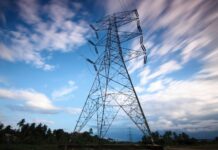Among the components of an energy bill, two significant elements stand out: commodity and non-commodity charges. These two charges dictate actual costs and also help maintain vital energy infrastructure. But, in the coming years, non-commodity charges will be increasing. What does this mean for business? Find out below.
Understanding commodity vs. non-commodity charges
Commodity charges pertain directly to the consumption of energy itself, such as electricity or gas. These charges fluctuate with market conditions and constitute a central component of energy bills. On the other hand, non-commodity charges cover the costs associated with the infrastructure and services required for energy delivery and management. These charges include network maintenance, system balancing, environmental levies, operational costs, and regulatory compliance expenses.
The role of non-commodity charges
Non-commodity charges play a crucial role in ensuring the smooth and sustainable operation of the energy system. They support essential services such as maintaining the electricity and gas grids, balancing energy supply and demand, promoting environmental initiatives, covering operational expenses, and adhering to regulatory standards.
What makes up non-commodity costs?
Several factors contribute to non-commodity charges, including:
- Infrastructure investments: The enhancement and expansion of energy grid infrastructure require substantial financial backing, with resulting costs often passed on to consumers through increased charges.
- Energy demand fluctuations: Rising energy demand prompts heightened investment in system balancing and network maintenance to ensure reliable operations, potentially leading to elevated charges for consumers.
- Regulatory changes: Shifts in regulations, particularly concerning safety, environmental protection, and market operations, may necessitate costly compliance measures, ultimately reflected in non-commodity charges.
- Environmental initiatives: Government-led efforts to promote renewable energy and reduce carbon emissions entail additional expenses funded through non-commodity charges.
- Technological advancements: Integrating new technologies such as smart grids and renewable energy sources involves significant initial costs that can contribute to higher charges for consumers.
Impacted energy subsidies and schemes
Increased costs of non-commodity charges will help support several energy subsidies and schemes in the UK, including:
- Nuclear-Regulated Asset Base (RAB) Levy: The RAB model supports investment in nuclear assets, providing more certainty over revenue streams for infrastructure projects.
- Hydrogen Levy: This new levy will support green hydrogen production, crucial for transitioning to a low-carbon economy.
- Energy-Intensive Industry Support Levy: Increases in subsidies aim to support energy-intensive industries in remaining competitive internationally while transitioning to more energy-efficient practices.
- Carbon Capture and Storage Levy: Subsidies for carbon capture technology are essential for reducing emissions in industries where other decarbonisation methods are not viable.
If you have questions about how these increases will impact your business, get in touch with one of our specialists at Sustainable Energy First for a no-obligations chat.
For further advice on non-commodity charges, get in touch with our specialists at Sustainable Energy First.













